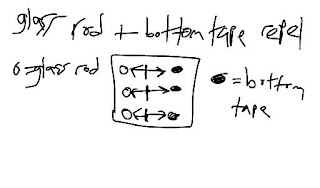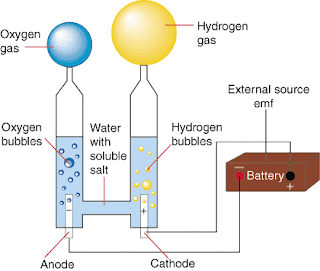But, I then wondered: Is it possible to have an equal amount but to not be evenly distributed? Indeed, it is so. This state is called polarization.
This is what I was thinking when the class was given an in-class demonstration. The sweater and the balloon initially didn't attract each other because they had neutral charges. But, that changed when the balloon was rubbed against the wall, it became more positive while the wall became negative. Using my prior knowledge, I assumed that this happened because I thought that as electrons were being transferred from the balloon to the wall, the wall became more negative while the balloon became more positive.
 But, how did the sweater attract to the balloon? How did it become negative? Doesn't this only apply to things with a positive charge while the other has a negative charge? It turns out that both went through charge induction, which I at first thought it was when opposite charges were brought together through neutral charges. But, what charge induction really is, is when one object is charged near a neutral charge and changes the distribution of positive and negative ions in order to create two polar ends.
But, how did the sweater attract to the balloon? How did it become negative? Doesn't this only apply to things with a positive charge while the other has a negative charge? It turns out that both went through charge induction, which I at first thought it was when opposite charges were brought together through neutral charges. But, what charge induction really is, is when one object is charged near a neutral charge and changes the distribution of positive and negative ions in order to create two polar ends.Essentially, the balloon was moved to the wall and nothing happened initially since both were neutral to start with. Then, when it was moved to the sweater and back to the wall, it polarizes the wall shifting the negative ions from the positive ions.
I then wondered why the negative ions were moved rather than the positive ions. Did it have to do with the greater electrostatic strength of positive ions than negative ions? Or was it because the opposite charges of positive ions and negative ions held each other in place? It seems as if though this is the case because I think that the positive ions are stronger than the negative ions. I theorize, although most likely erroneously, that the electrostatic strength has an inverse relationship with the number of electrons. It seems as if though the negative ions have less strength because they have a greater number of electrons than the positive ions. The reason I think this is so is because I think that the less electrons there are, the less pressure is being put on the "electro-chain" that holds the electrons in place. Hence, the charge of positive ions is stronger than that of negative ions.
I then wonder if this could play into the particle attraction between solids, liquids, and gases. It seems like the positive and negative ions lock the location of the particles based on their charges, hence bringing the molecules together. This may be influencing the decreasing ph and th energy in a liquid, hence slowing the the particles and decreasing the amount of space they move and turning to solid as the particles form a strongly attracted lattice structure.
A liquid on the other hand, has less attraction between the particles than the solid, so they move about more freely. I think this may be because they have some attraction but mainly repel. I think they partially attract because if they didn't when a liquid is in a container, the particles in the liquid would still move farther apart. But, because there is less space to spread out, the particles don't move apart as much.
A gas, on the other hand, seems to repel even more than a liquid and a solid, with little or no degree of attraction. If a gas were not in a container, the particles would move freely due to lack of attraction, which would explain why pollutants in the air can spread out so much in the atmosphere, aside from the winds. But, if a gas were in a container, the particles would have some degree of attraction but less than a liquid. There is a greater probability that gas particles could move apart from each other and then collide again because there is less space for the particles to move around in the container.
 Overall, substances can change state because of their changing electrostatic forces and attractions between particles at an atomic level.
Overall, substances can change state because of their changing electrostatic forces and attractions between particles at an atomic level.This same principle also applies to ionic compounds, which form when ions transfer electrons to form neutral compounds. Through the exchange of electrons, one element, of course, becomes positive while the other one becomes negative. This is what happens when NaCl combine. The Na needed to lose an electron while the Cl needed to gain one. So, through this "electron exchange", the Na became positive and the Cl became negative. They then formed an ionic compound, which means a neutral compound has formed through electron exchanges with ions.















